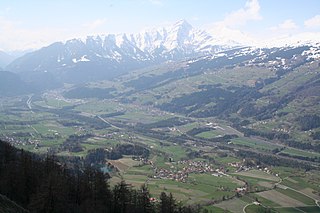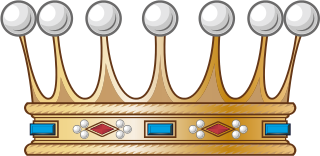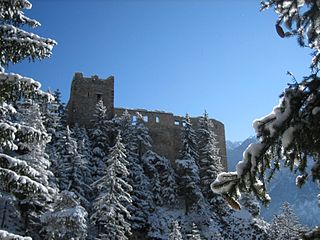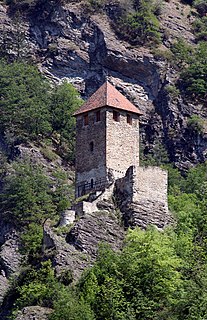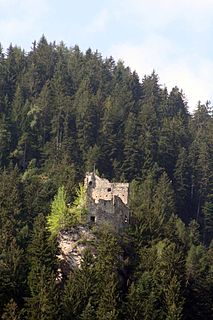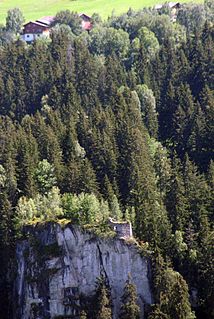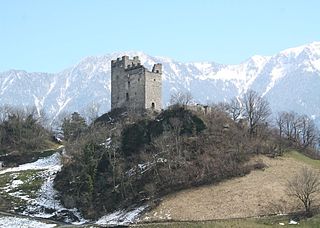| Heinzenberg Castle | |
|---|---|
| Präz village, Cazis | |
Ruins of Heinzenberg Castle | |
| Coordinates | 46°44′23″N9°24′31″E / 46.73972°N 9.40861°E Coordinates: 46°44′23″N9°24′31″E / 46.73972°N 9.40861°E |
| Type | hill castle |
| Code | CH-GR |
| Height | 1,130 m above the sea |
| Site information | |
| Condition | ruin |
| Site history | |
| Built | about 1200 |
| Materials | rough stone |
Heinzenberg Castle German : Burg Heinzenberg is a ruined castle in the municipality of Cazis in the Viamala Region of the canton of Graubünden in Switzerland.

German is a West Germanic language that is mainly spoken in Central Europe. It is the most widely spoken and official or co-official language in Germany, Austria, Switzerland, South Tyrol (Italy), the German-speaking Community of Belgium, and Liechtenstein. It is also one of the three official languages of Luxembourg and a co-official language in the Opole Voivodeship in Poland. The languages which are most similar to German are the other members of the West Germanic language branch: Afrikaans, Dutch, English, the Frisian languages, Low German/Low Saxon, Luxembourgish, and Yiddish. There are also strong similarities in vocabulary with Danish, Norwegian and Swedish, although those belong to the North Germanic group. German is the second most widely spoken Germanic language, after English.

Municipalities are the lowest level of administrative division in Switzerland. Each municipality is part of one of the Swiss cantons, which form the Swiss Confederation. In most cantons municipalities are also part of districts or other sub-cantonal administrative divisions.

Cazis(Romansh: Tgazas) is a municipality in the Viamala Region in the Swiss canton of Graubünden. On 1 January 2010 the municipalities of Portein, Präz, Sarn and Tartar merged into the municipality of Cazis.



